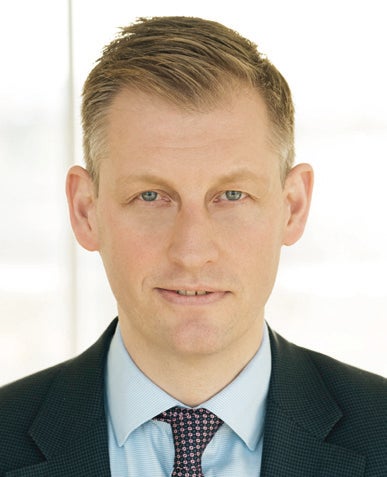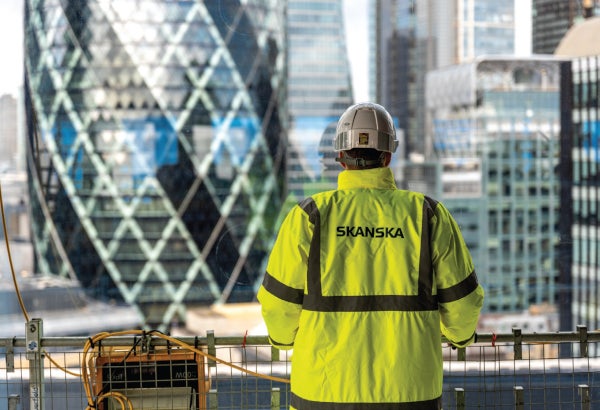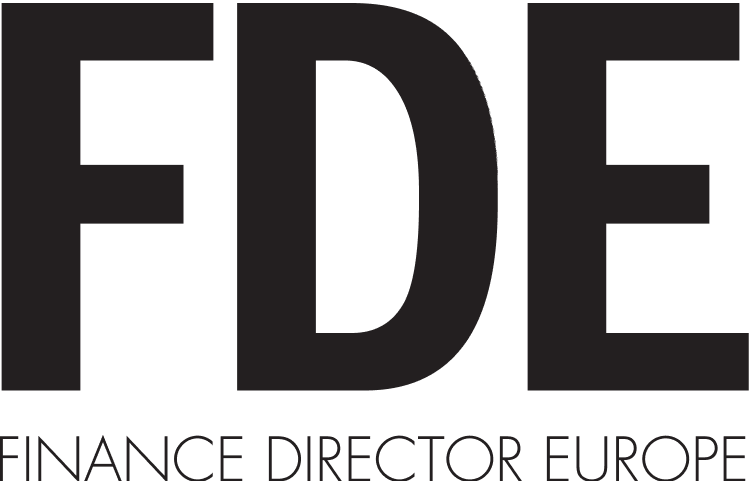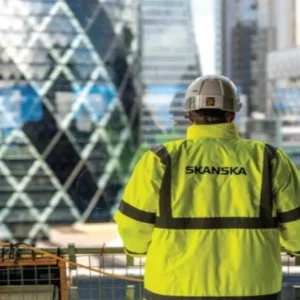
Before my interview with Magnus Persson, I have a few minutes alone. I’m waiting in a pallid conference room, a glass of water by my side and detailed instructions about Zoom protocol on the table. It could, in short, be anywhere – until I glance out of the window. There, kissed by a soft September sky, are towers – dozens of them – from spindly modernist grasshoppers, to sleek art deco apartments. Beyond, I could glimpse the East River, and then the ceaseless suburbs of Brooklyn and Queens. Over the past few years, most of my interviews have been conducted online. The setting for this one, 32 storeys up the Empire State Building, could not have been more different.
Beyond the bewildering cityscape, moreover, the panorama as Persson and I talked felt oddly appropriate. As the CFO at Skanska, modern New York would be impossible without his employer. Nor is this mere rhetoric. Over the past few decades, the Swedish construction company has been intimately involved in revising the Big Apple’s urban fabric. In 2014, for instance, Skanska finished rehabilitating the Manhattan Bridge, vital to the daily commutes of over 260,000 New Yorkers. Two years later, it helped build the Oculus. A miracle in steel and glass, this transport hub and shopping mall now occupies a space near where the Twin Towers once stood. Nor does Skanska limit its ambitions to New York. With staff spread across two continents, it’s built everything from Czech railway stations to Florida condos, and is now the fifth largest construction firm in the world.
Since he became CFO of Skanska in 2018, Persson has been crucial to these developments, emphasising that a large part of his time is spent creating the “maximum amount of value” for his shareholders. Spend long speaking to the Swede, however, and it becomes obvious that his role has transcended these bare essentials. From prodding co-workers to promoting sustainability, Persson argues that he is far closer to being a fully-fledged “strategic advisor” than he could ever have imagined a few decades ago. Not that any of this is straightforward. On the contrary, success in this new financial universe can only come from understanding and leveraging data, from clever departmental management, from having confidence that colleagues know their wheelhouse. Get it right, though, and the opportunities are clear – both for Skanska and the planet at large.
Bricking it
Even before Covid, construction was a low-margin industry. From high labour costs to intense competition for projects, builders have long been used to white knuckle balance sheets. According to one 2019 study, for instance, 44% of UK building schemes actually experienced a loss after adjusting for project overheads. And, as in so many other sectors, the pandemic and its consequences have arguably made the situation even tenser. That’s largely down to the rising cost of construction materials. With the price of concrete soaring by over 7.7% during the second half of 2022 – and steel jumping even higher – it’s easy to see how an industry already predicated on tight returns could be squeezed even further.

These constraints, at any rate, arguably begin to explain dramatic changes to the finance function at Skanska. “If you back up 15 or 20 years,” Persson says, “I think what was then considered to be the finance function was more traditional accounting.” But now – especially in light of “cost pressures” across the sector – the CFO is expected to provide deeper insights into the nature of Skanska’s business. “How do you design an incentive system to drive long-term towards our strategic targets?” Persson asks rhetorically. “How do you allocate capital across different business streams to both make use of the business opportunities that are present – and at the same time stick to financial rigour and not overstretch in terms of risk tolerances?”
All this sounds great in theory. But how to answer these questions in a way that doesn’t shatter Persson’s brain? As so often in the finance space, digitalisation is vital here. To explain what he means, Persson again evokes the situation a few decades ago. Back then, what digital platforms did exist were “cumbersome” and typically needed to be tailored to specific problems. Nowadays, the SaaS revolution means that finance directors can sharpen procedures at the flick of a switch, and be left over with mountains of valuable data. If nothing else, that’s clear from what Skanska is doing in its internal processes. Over the past few years, to give one example, it worked with software giant Infosys to develop a shared service centre for its finance and accounting processes.
If Persson and his team only untangled Skanska’s financial innards, that would already be impressive. But as our conversation progresses, it becomes clear that he’s more interested in those sweeping existential questions – what he describes as “operational knowledge combined with financial knowledge”. Clearly, that chimes with his employer more generally. Aiming to go completely digital by next year, the firm’s Swedish wing hopes to integrate IT across the business, something that’s true everywhere from supply chains to safety measures to sustainability. The point, Persson reiterates, is less about individual victories – and more about those “strategic targets” that can really transform Skanska over the longer term.
“I think the release of value from this type of data application has the potential to have much more value creation than if we just reduce costs and administrative processes.”
2023
The year that Skanska Sweden hopes to go fully digital.
Redshift
Building tomorrow
With their growling engines and looming cabs, industrial lorries are perhaps not where you’d imagine Skanska’s digital future to be forged. But stop by a company construction site and you may soon be surprised. Rather than just relying on their own eyes and ears to navigate, drivers are instead starting to lean on the power of automation. Working with an external partner, Skanska has begun equipping bulldozers and diggers with trackers. As the machines trundle around a construction site, the data is sent up to the cloud, which in turn uses AI to calculate the most efficient route forward. That path is then beamed back to a screen in the driver’s cabin, who can not only see where to go, but also understand where colleagues are on their own trips, thereby avoiding needless traffic jams.

Apart from being impressive in its own terms – who could have imagined that Persson’s “yellow machines” could be so dynamic? – the CFO is equally keen to dwell on the project’s broader implications. As he puts it: “I think the release of value from this type of data application has the potential to have much more value creation than if we just reduce costs and administrative processes.” A fair point: given fuel costs for diggers and other construction equipment have risen by up to 30% in recent years, getting operators around more effectively will inevitably boost Skanska’s bottom line, and that’s before you factor in broader efficiencies. But more fundamental still, Persson argues, is the way in which this experiment shows how using data can have genuine benefits on the ground for both Skanska and its staff. “I think the way data is used is a little bit sloppy sometimes,” he says. “You really need to think about what you’ll do.”
“If you don’t focus on reducing the emissions of your company today, and we actually do have a carbon tax in three years, five or seven years, you will have a very steep uphill climb.”
46%
The percentage drop in Skanska’s carbon emissions since 2015.
70%
The amount by which Skanska hopes to reduce its carbon footprint by the end of the decade.
Skanska
Persson has introduced a similar philosophy to other areas of the business too, not least when it comes to the environment. “I’m a big advocate for the need for any company – and for us as well – to reduce carbon emissions,” he says. “It’s not only for Skanska. It’s for the world. It’s for my kids.” Examine what the company is doing, indeed, and you get the sense that Persson’s colleagues are equally enthusiastic. For one thing, the company now publishes yearly sustainability reports, using data to offer details on everything from energy reduction in new office buildings (down 30% per year) to Skanska’s total carbon emissions (down 46% since 2015). That’s echoed by EC3. Co-developed with Microsoft and the University of Washington, this free, cloud-based tool allows Skanska’s engineers to calculate the amount of embodied carbon in any given build. It goes without saying that EC3 could seriously boost Skanska’s deeper sustainability goals too. And, like Persson’s work on those yellow machines, it could ultimately save money as well.
Carbon copies
In short, it seems clear that digitalisation and sustainability are two pillars of Magnus Persson’s CFO role. But they’re arguably shadowed by a third. As his newfound job as “strategic advisor” implies, indeed, Persson’s job involves far more than mere data crunching. Think about it like this: equipping Skanska’s bulldozers with tracking equipment sounds appealing in the boardroom, but for a decentralised company like Skanska, encompassing dozens of departments and over 30,000 workers, actually turning a digital dream into brick-and-mortar reality requires thoughtful interpersonal relationships. “We need to have a culture that embraces change in this area,” Persson says, “and we need to have competence in our employees.”

Apart from shaking hands and taking names, Persson manages the trick by exploiting all that data. If he can offer colleagues genuine insights about how to bolster operations, after all, he’s far more likely to win their trust. In the same vein, he works hard to ensure that insights are translatable across markets. In the United States, for instance, building projects rely on the so-called ‘Construction Manager/General Contractor’ (CMGC) approach. This means that once an owner decides a design is complete, the construction manager can bid on the cost. If both parties come to an agreement, they’ll become the general contractor and start building. But in markets like Finland, Persson explains, construction operates on a completely different model – obliging him to understand the “underlying characteristics” and specific terminology of individual contracts before presenting the global data in a unified way.
All this hard graft is surely just as well. As Persson says, he and his colleagues have plenty planned over the years ahead. Once again, sustainability is a special focus – a fact he argues could be driven as much by policymakers as by executives like him. “If you don’t focus on reducing the emissions of your company today, and we actually do have a carbon tax in three years, five or seven years,” he argues, “you will have a very steep uphill climb.” Fortunately, there’s evidence that Skanska is keen to get ahead of the curve, with the firm pledging to cut its embodied carbon emissions by 70% as early as 2030. With similar plans coming out of Skanska US, there’s every reason to think that the bridges and buildings Skanska builds five or ten years from now can help the planet as much as they do the people who use them. As I gaze out across the expanse of Manhattan once more, it’s a reassuring thought.






